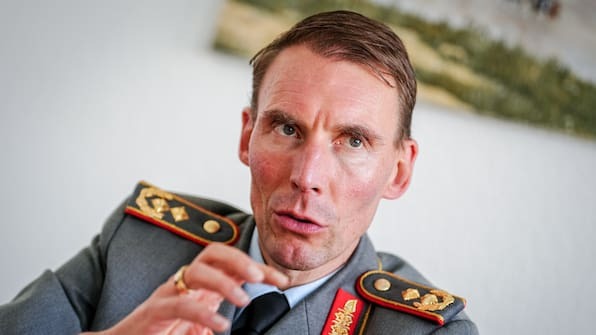Russia's military buildup extends beyond its current needs in Ukraine, potentially posing a "serious military threat" to NATO by 2028, Die Welt reports, citing German security sources. The expansion includes significant weapons production, troop recruitment, and international military cooperation.
According to Major General Christian Freuding, head of the Ukraine Situation Center at the German Defense Ministry,
"The Russian army has more tanks, more ammunition, more missiles, more drones month after month. Production is growing, depot reserves are growing."
While speaking to Die Welt am Sonntag, Freuding emphasized that although a Russian attack isn't certain, "Moscow is clearly creating the prerequisites for it."
According to Welt, the Kremlin is largely compensating for its personnel and material losses in Ukraine and is able to build up reserves in certain areas. German security sources note that Russia currently produces approximately 3,000 glide bombs monthly, weighing up to three tons depending on the model, along with thousands of UMPB D precision glide bombs with ranges up to 100 kilometers.
Russian companies and volunteers manufacture 1.5 million first-person-view (FPV) drones annually, while the country produces at least 6,000 long-range Shahed one-way attack explosive drones yearly, Die Welt says. Many components for these unmanned aircraft come from China, according to security sources.
Moscow recruits approximately 30,000 soldiers monthly through high financial incentives, European intelligence services note. This aligns with Russian President Putin's order to increase the army to 1.5 million active service members, despite daily casualties at the Ukrainian front. Additionally, about 12,000 North Korean fighters are reportedly already deployed, security sources indicate.
According to German government experts' estimates, Russia procures up to 3.6 million artillery shells annually, while producing several hundred cruise missiles and ballistic missiles yearly. Iran and North Korea supply additional ballistic missiles to Moscow, Die Welt reports.
The Russian military has managed to compensate for its tank losses on the Ukrainian front, primarily using old stockpiles. Security sources indicate these reserves could sustain warfare at current intensity for at least another year, Die Welt notes.
Related:
- Russian online recruitment of intel gatherers across Europe revealed by investigation
- Ukraine’s domestic arms production triples, reaching 33% of military supply
- Russia’s secret $ 250B war fund threatens economic collapse, ex-Bank of America vice chairman says
- Ukrainian public figures to world leaders: Do not appease evil
- “Not if, but when”: NATO prepares for Russian attack on Finland, Baltics and Norway
- ISW: Kremlin prioritizes force generation over economic concerns for 2025
- Russia may attack NATO territory by 2030, warns German defense minister

